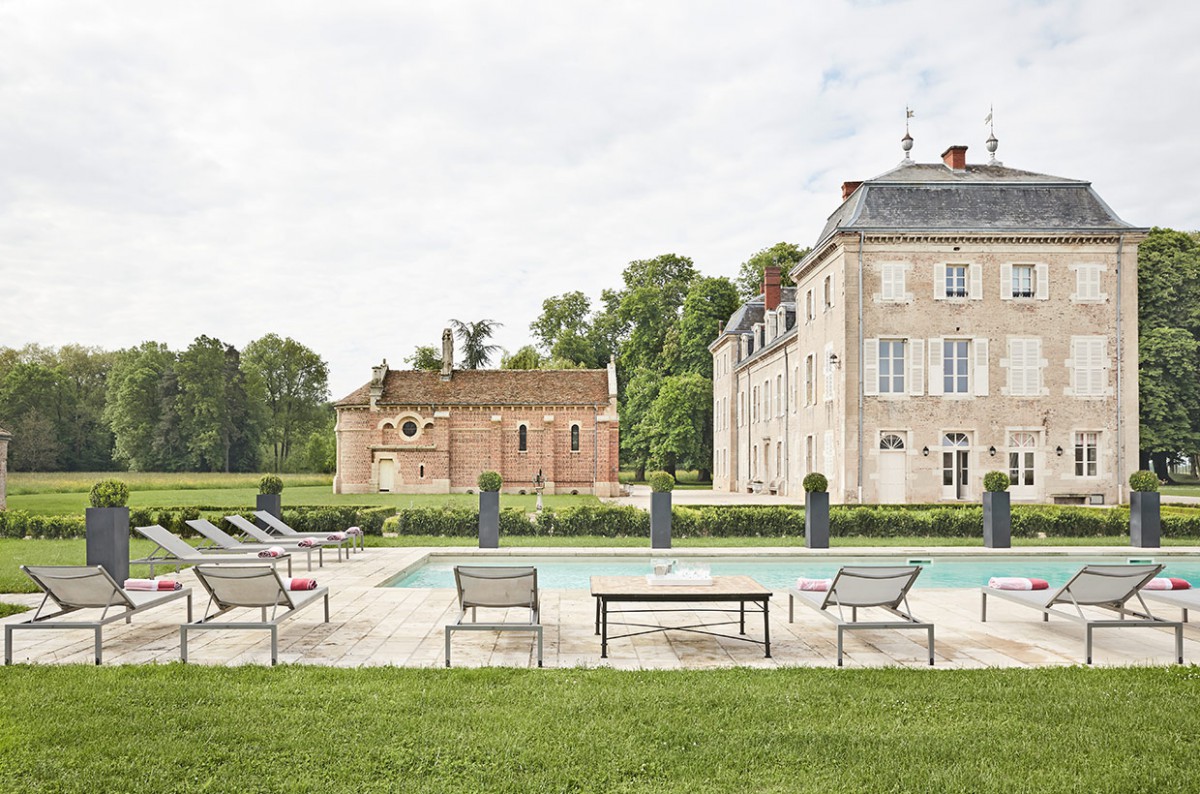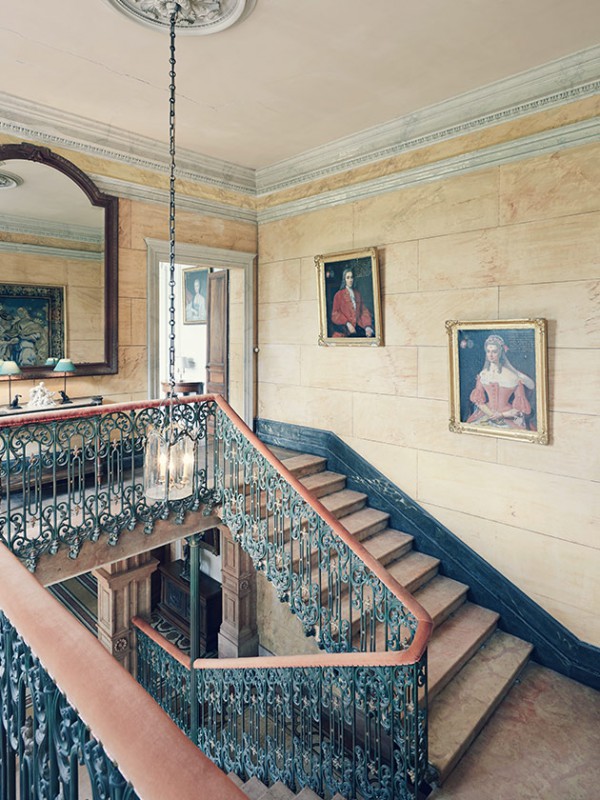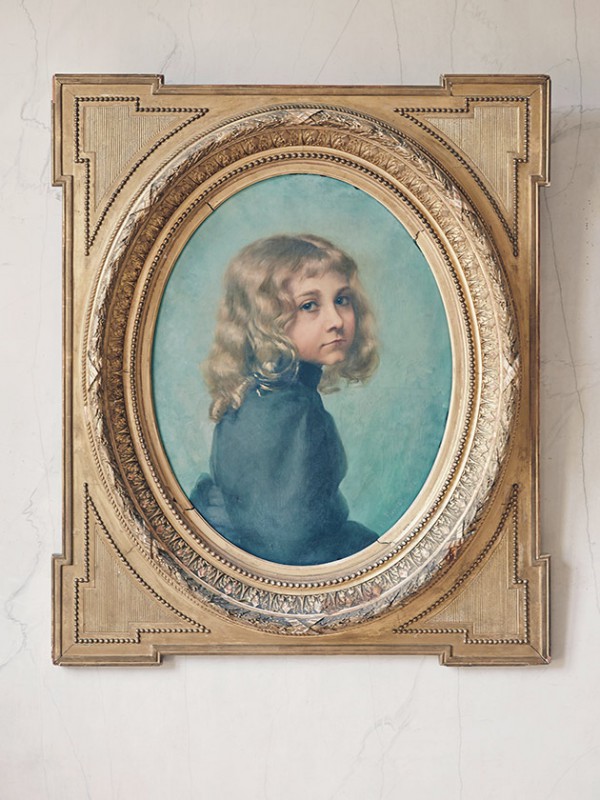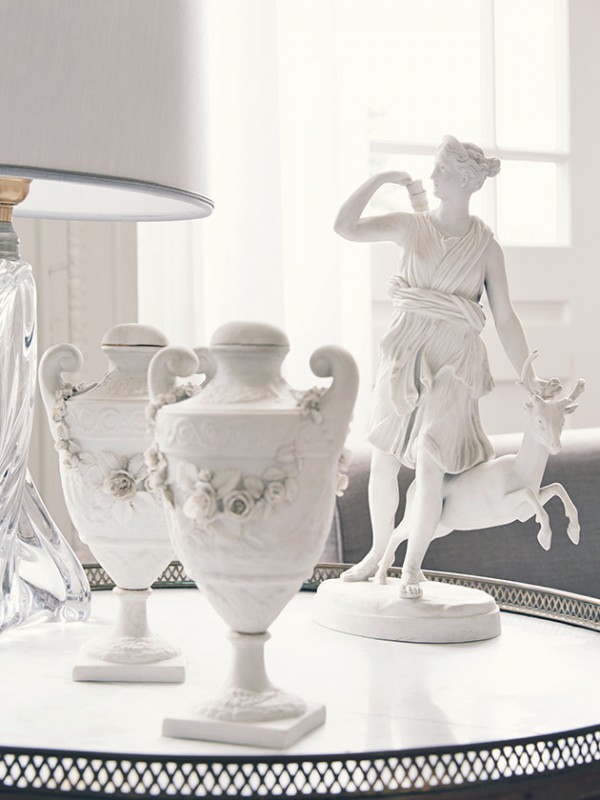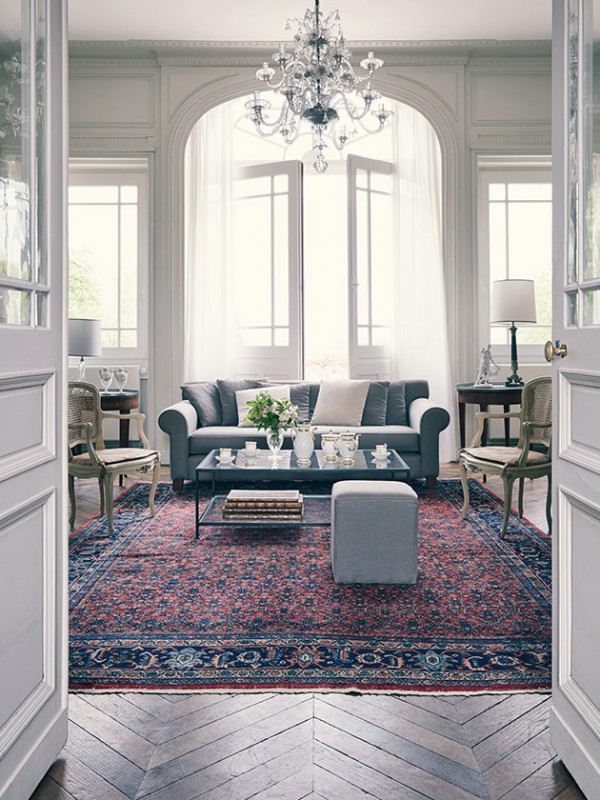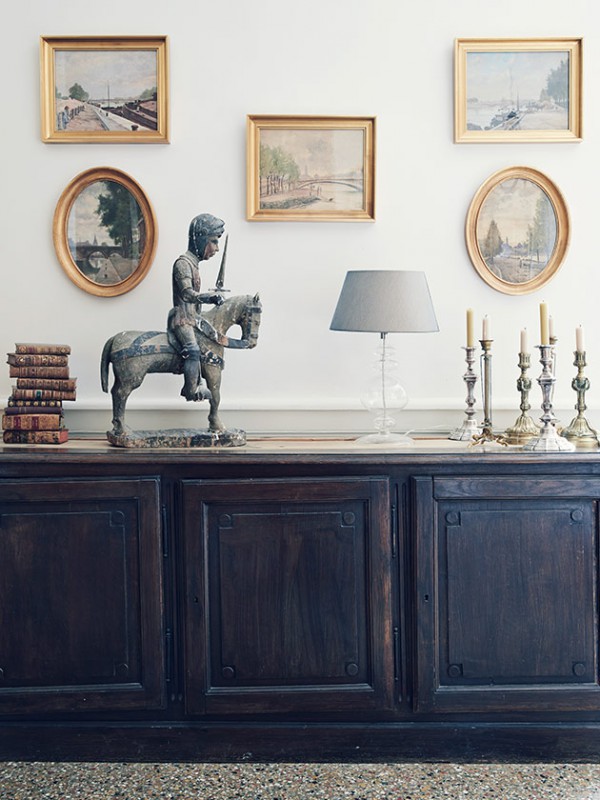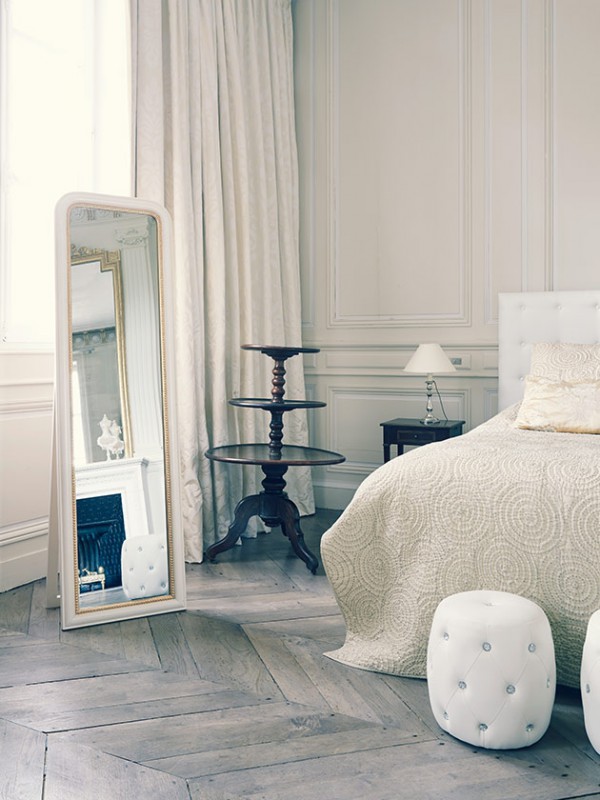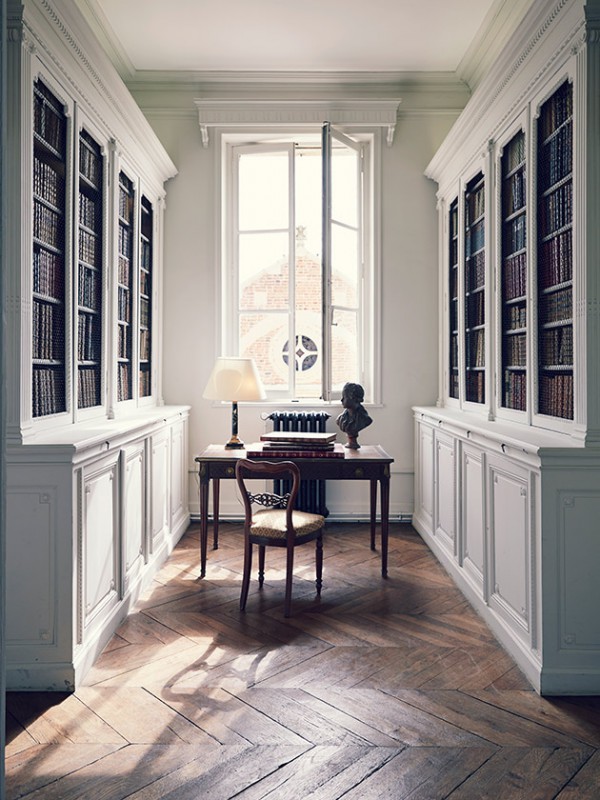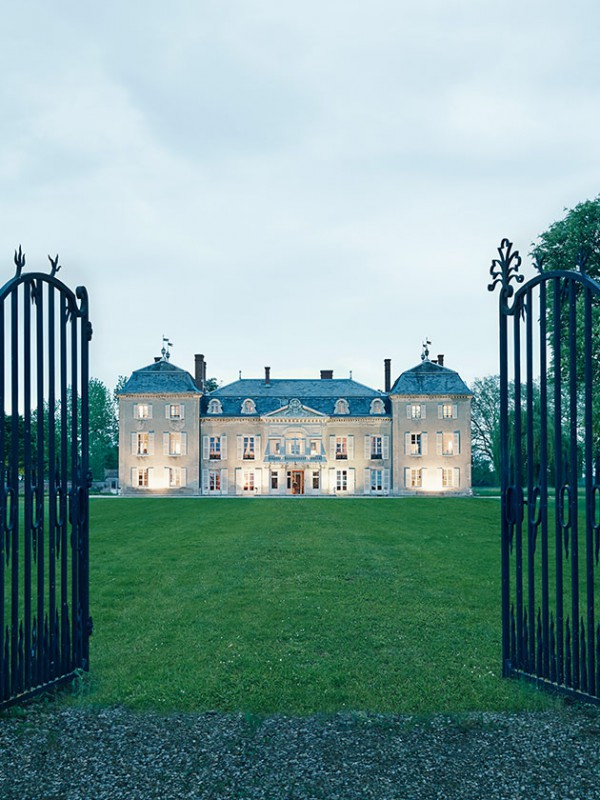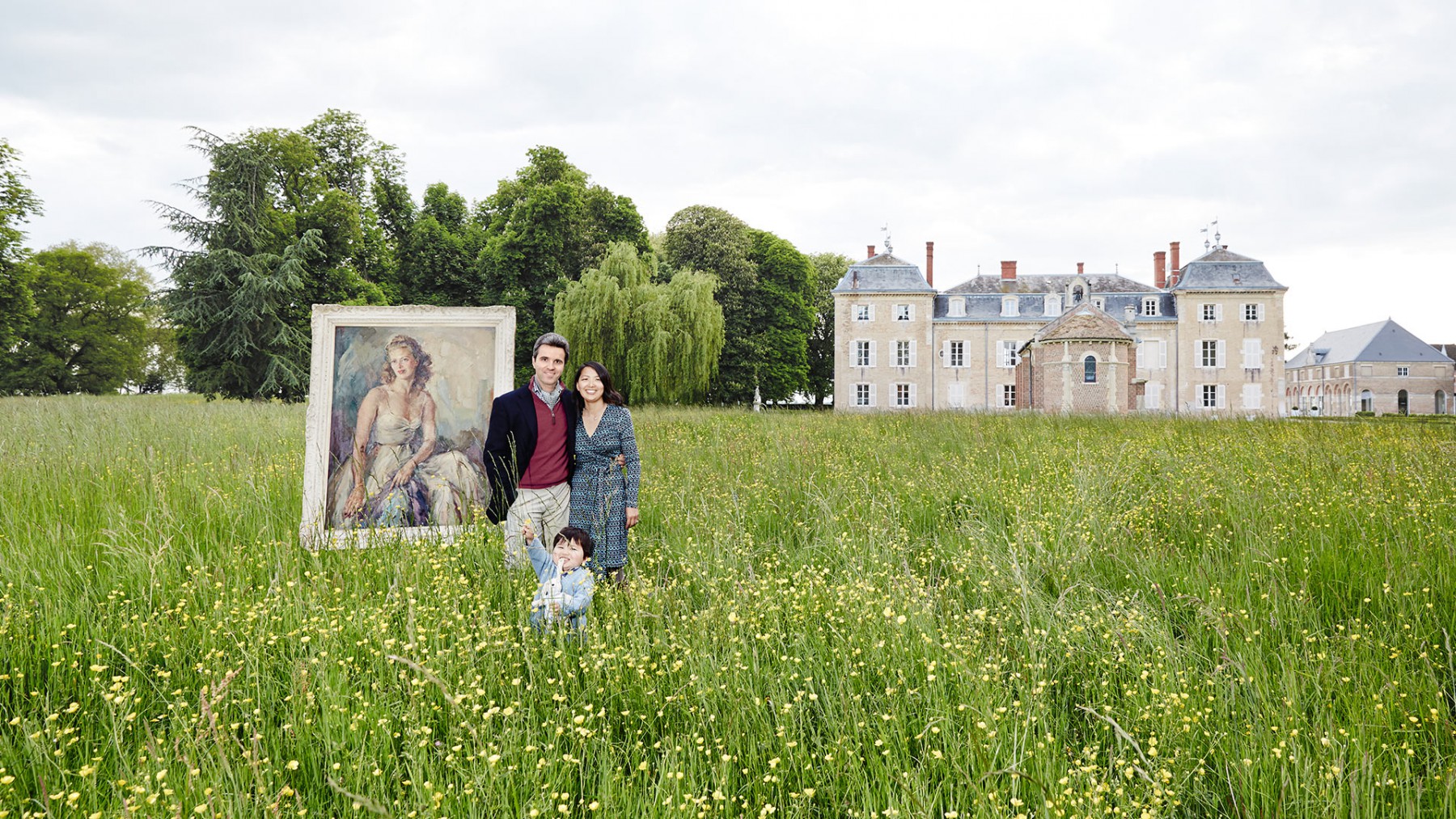Vive la Tradition by Eva Müller-May | 24th September, 2013 | Personalities
400 years of history, 1,500 square meters of residential space, 100 hectares of land – the Château de Varennes in Burgundy survived the French Revolution and both world wars unscathed. It is one of the few castles in France which has remained in the possession of a single family since being built. This presented the 14th heir, Count Aymeric de Truchis de Varennes, with an obligation and a challenge. By equipping the castle technologically for the demands of the third millennium, and by carefully modernizing its interior so as to turn it into a vacation and events resort, he and his wife Sonia have preserved the estate for the next generation.
One symbol plays an important part when Aymeric and Sonia de Truchis invite guests to the Château de Varennes in the Bourgogne: two lions embracing a golden pine tree and a third, on the helmet of a suit of armor presenting a raised sword. The coat of arms of the Comte de Truchis de Varennes can be found throughout the ancestral home: at the entrance of the castle constructed in 1730, on fireplaces, on family portraits, and on silverware and china. It symbolizes 400 years of history, the family’s Italian origins and their standing in feudal France since 1601. The De Truchis served in the Armée de Condé and as musketeers, were involved in politics and worked as lawyers.
Europe has become peaceful since those times, but the motto on the pink banner “Virtute et Viribus” still holds true today. “Because I needed ‘courage and fortitude’ when I inherited the chateau five years ago,” says the 14th Count de Truchis de Varennes. At the time, the Comte was responsible for marketing and digital development at an international communications company in London and Paris. “Then I had to shoulder the burden of my family’s inheritance.”
“Quality has always been important to us. That’s why everything is so well preserved.” Aymeric de Truchis
Aymeric de Truchis gives us a personal tour of the castle. He sits down at a table in the “large dining hall,” which was renovated by his great-grandfather Stanislas in 1880: elegant and sophisticated, with oak wood flooring and wall paneling. A few words in English drift across from the “small dining room” next door, which seats ten. Sonia de Truchis, Aymeric’s wife, is on the phone to Australia. Their two-year-old son Maxence is playing in the garden with Christelle, the nanny.
The chateau survived the French Revolution, as well as two world wars. Sell the property? Out of the question! “My mission was clear,” explains Aymeric de Truchis. “I had to preserve the castle, and bring it into the third millennium.” As a child, he would visit his grandparents during school vacation every year. He would play in the agricultural part of the castle: in the old blacksmith’s, the joinery, the dovecote at the top of the tower, and in the hayloft. He would drink milk from healthy cows, and his breakfast would include eggs laid by free-range hens. “Those were carefree days!” But in 1988, when he was 15, his grandfather gave up agriculture. “For estates under 300 hectares, agriculture had simply become unviable.” Afterwards, the family lived and worked in Paris, and used the castle only as a weekend and vacation home.
When Aymeric de Truchis inherited the property in 2008, all these childhood memories were but pure nostalgia. He had to compile the figures: three hectares of parkland, 100 hectares of forest and farmland, 1,500 square meters of residential space on three floors, 17 bedrooms, 72 windows, two parlors, two dining rooms, a library and furniture spanning three centuries. Add to that a chapel with room for 80 people, and over 3,000 square meters of agricultural buildings: an orangery, the farmhands’ quarters and stables. “Everything was well preserved. My father had recently renovated the roofs, and installed a pool. However, the place needed a facelift, and the heating and electrics devoured a huge amount of money.”
“The garden has been redesigned around the pool in order to create geometries à la française.” Sonia de Truchis
So what to do? Using the estate commercially was suggested by American friends of Sonia de Truchis, who had studied economics at the Ecole Supérieure de Commerce de Paris, and had most recently been responsible for events at a French TV channel. Plans were put together to rent out the property as a vacation home, and as a venue for weddings, birthday parties, workshops and events. Its size and location are perfect: like a small island, seemingly unreal, in the middle of a small village, and surrounded by forests, meadows, and rapeseed and grain fields. The famous wine-growing regions of Burgundy are in easy reach.
“Once the plans had all been finalized, we sold our Paris apartment and started the renovations,” says the Count. Three years were spent stripping down, modernizing and refurbishing the building. A stairway for servants, of which there had not been any for a long time, was taken out of service and new water lines, electrical power and heating were installed in it. However, hardly any alterations to the wall paneling and the trompe l’oeil paintings were made. The former servants’ quarters on the top floor were rearranged and turned into suites, while the existing suites were renovated. All the new rooms were fitted out with a mix of modern furniture and heirlooms. There is now room for 30 guests in twelve suites containing 17 bedrooms. The orangery was turned into a ballroom with space for over 200 guests, and now boasts a professional kitchen.
Protecting the environment was very important to the lord of the castle: “We wanted to prove that a chateau does not have to be a huge energy wasting machine!” All lights use energy-saving bulbs, and a wood chip heating system has been installed in the former stables. The chips are made from tree trunks from the estate’s own woodlands. “This supplies 700 liters of hot water, allowing all 30 guests to have a shower at the same time. And we can heat the building and the pool to 22°C without feeling guilty at all.” Since 2011 the couple has organized 60 large-scale events: the Count is responsible for managing the estate, while his wife takes care of the organizational side of the events.
“If a party ever gets too noisy, my husband goes over to the neighbors with a crate of champagne…” Sonia de Truchis
Sonia de Truchis has finished her telephone call: “We have taken a big step forward concerning the party for the Australians – in June 2014. To many people, their wedding is the most important moment of their life. A planning phase of two years is quite normal!” The de Truchis advise each couple individually, couples from Europe, Australia, the United States and Asia. “By now, I could work as a diplomat or a psychologist,” says Sonia de Truchis, laughing. The planning stages are often so personal and intense that the events manager and her clients become friends. “One of ‘our brides’ is Maxence’s godmother,” she says.
After everything has been organized to perfection, and after the guests have arrived and the service personnel have taken over, Aymeric and Sonia de Truchis retire to the refurbished dovecote with Maxence. The space includes a kitchen, bathroom, parlor and two bedrooms. This reminds the young Count of his life as a manager, and no doubt of his carefree childhood, too.
